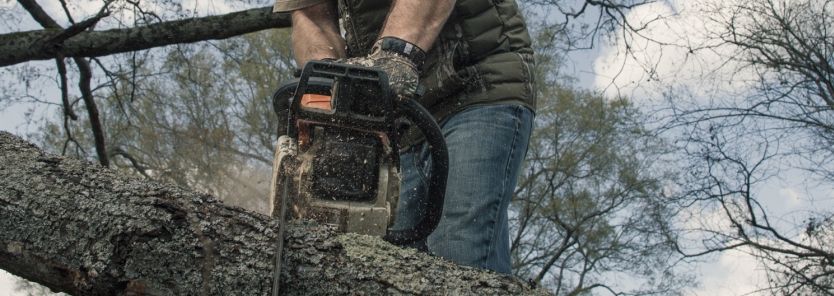What if you own property where the slope is too steep to plant food plots? What if you simply can’t afford the tools to plant acres of plots or maybe you simply don’t have the time to keep them in good condition? Various scenarios make it impossible to plant food plots, but there are a number of things we can do to enhance a property’s natural ability to produce more food. Even if you have the best food plots in your area, you should still try to enhance your property’s native food sources to provide year-round food and as a buffer against a possible food plot failure. There are several things we can do to bolster our property’s natural food production, following are four of the most fruitful.
- One person and a chainsaw can do a lot. This is the least expensive of the four as long as you don’t mind a little work. It’s amazing how much food and cover can be created by eliminating some canopy trees and allowing the sunlight to hit the forest floor. The native seeds are already there, you just need to add a little sunlight and the stem density will explode. Quite frankly, a whitetails’ world exists from six feet high to the ground, if a tree isn’t producing a mast crop it’s really not doing your whitetails any good at all. Sunlight to the soil is good for your whitetails.
- From the soil into the plants then into your herd. Obviously we fertilize food plots, but fertilizing mast trees, open meadows and even browse species will help produce more food that will contain better/more nutrients. Besides food plots, most managers concentrate on fertilizing hard mast like oaks, hickory, beech and chestnuts, or soft mast like apples, cherry, berry or rose hips. Oaks are the most important of those species to whitetails as they can make up over 70% of a whitetail’s diet during a portion of the fall. BioLogic’s Tree-Paks make fertilizing trees and shrubs simple, or a dose of triple 13 will also work. This should be done during the spring to provide nutrients while the crop is developing. If you fertilize during the late summer or fall, a late surge in fertility can cause new growth too late into the season resulting in frost damage and stress to the trees/shrubs. Even fertilizing browse species or meadows where edible grasses and forbs are growing will help to produce more food at a higher nutrition rate. If it goes into the soil it comes out in the plants and eaten by the wildlife. For open meadows it’s important that you also follow up with mowing sections from time to time to stimulate regeneration of more palatable, digestible growth.
- While fire can be the most complicated of our four methods, it is absolutely necessary in some environments to scarify seeds that would otherwise go un-germinated. To maintain vigorous native warm season grass stands or certain pine forests, prescribed fire should be practiced periodically. Change by fire is biologically necessary to maintain many healthy ecosystems. A safely controlled burn would first begin with an approved fire plan. Firebreaks should be created along the burn boundaries by disking a swath around the burn area or doing a small back-burn. The burn must be supervised at all times. Check your state’s NRCS website for guidelines on the basics of conducting a safe, successful prescribed burn (http://www.nrcs.usda.gov/wps/portal/nrcs/detail/oh/programs/landscape/?cid=nrcs144p2_027122).
- Obviously your perennial food plots should be mowed, but if you have natural meadows or old homestead openings that are not taken care of and overgrown, they too can yield food for your deer. The forbs and grasses they can provide can provide extra forage that can also act as a buffer during a bad mast year or a gap in your food plot program. Just having an opening doesn’t automatically mean it will output loads of forage. Just as your perennials are more palatable when they produce new growth after they are mowed, the same holds true for many native plants in these meadows. When the plants reach maturity their digestibility decreases and their protein levels drop. Nutrition levels and digestibility can be considerably improved when these plants are mowed. Each time the growth reaches maturity, mow it. Some suggest mowing sections each time to keep plants of all stages of growth available to your herd. You never want to mow all the food off their plate in one swoop. Typically a meadow mowed two to four times per year will remain productive for your herd.









